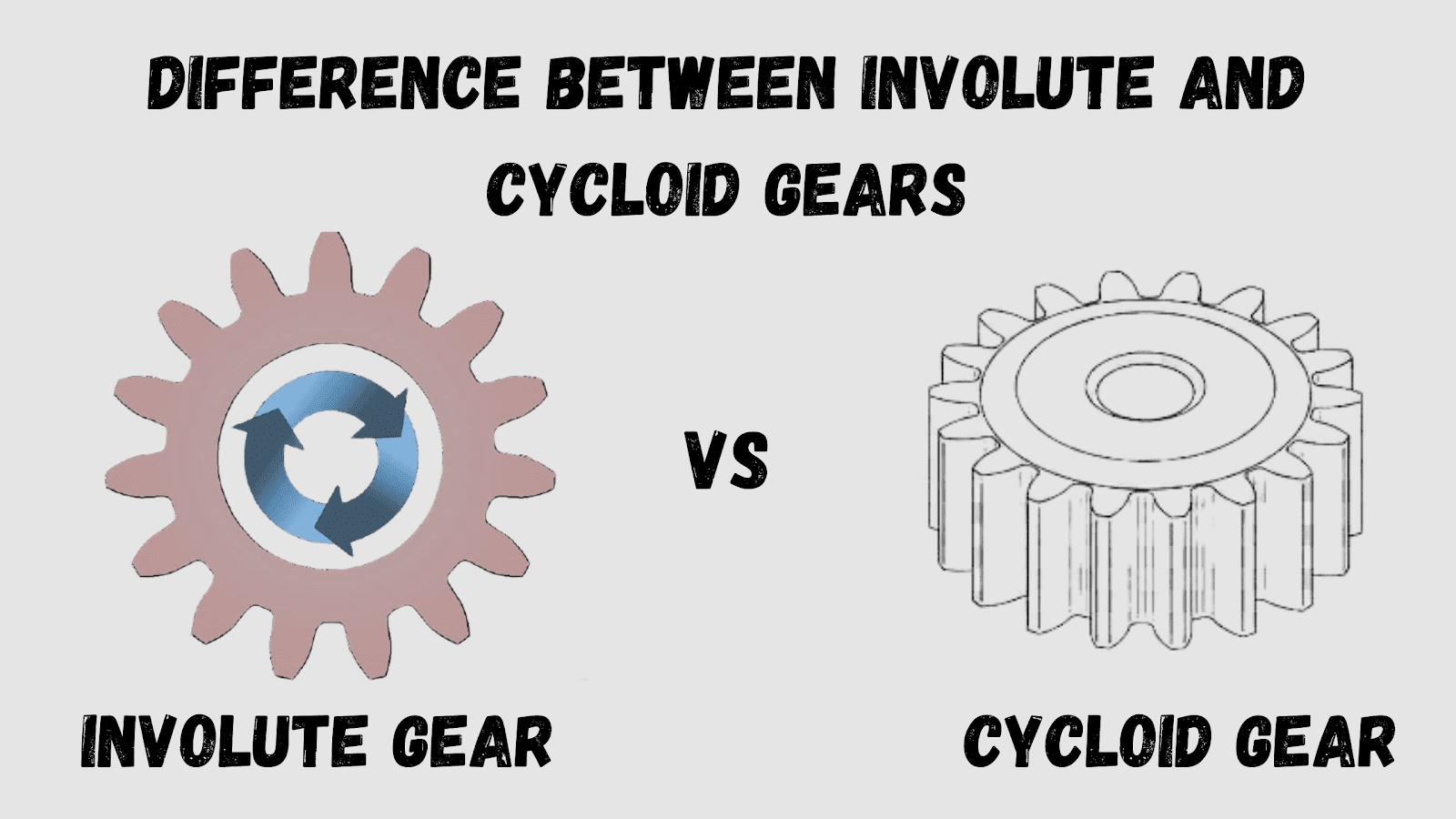What is the difference between Involute and Cycloid Gears?
The Difference between Involute and Cycloid Gears are as follows:
- Cycloid gears are used for power transmission. Cycloid gears were so-named because they produce the curve shape of a cycloid. In other words, cycloidal gear teeth form a shape similar to that of a roulette wheel so as not to destroy the worm’s teeth rather than being engaged with each other across their shift direction as with ordinary involute gears. Both have become obsolete due to advances in gear design and better materials.
- Involute gears are used at transmissions that consist mainly of an axial tooth profile and an involute lead profile, e.g., worm gearing or non-circular crown gearing. The motion conversion ratio varies based on
- In an involute gear, the tangent line of one tooth always intersects its neighbor tooth in a single contact point.
- In cycloid gears, it’s possible for the tangent lines of two adjacent teeth never to meet.
- Cycloid gears can be manufactured to engage with each other more smoothly than involute gears. They also require fewer operations during their production – even though this is offset by increased costs, especially because these machines are so uneconomical for mass production purposes at present.
- Involute gears are usually used in machinery for linear motions, where the number of teeth is proportional to the ratio of output speed and input speed.
- Cycloid gears are used in machinery for rotary motions. A cycloid gearset changes rotation speeds when they change the proportion, while an involute gearset changes rotation speeds when it has changed directions.
- Cycloid gears naturally lead to continuous rotations rather than interrupted “steps”.
- The shapes of the teeth resemble a cycloid curve with a constant radius, whereas Involute gears have rounded-off (dead) curves with their radii changing gradually or non-linearly along the length.
- An involute gear is shaped with a straight tooth form, while cycloid gear teeth are curved
- Involute gears are curved in a radial direction, while cycloid gears are curved in a tangential direction.
- Cycloid gears have the advantage of being able to transmit more power than involute gears of the same size.
- Cycloid gears are less likely to produce noise and vibration.
- Cycloid gears are more difficult to manufacture than involute gears.
- Involute gear has a more complex shape, while cycloid gear has a simpler, curved shape.
- The involute gear tooth profile is generated by tracing the curve of a circular arc on a straight line. This curve is known as an involute of a circle.
- The cycloid gear tooth profile is generated by tracing the curve of a cycloid (a traced line on a circular arc). This curve is also known to be tangent to the generating circle at all points.



